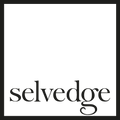
BRITISH TEXTILE BIENNIAL: PARTICIPATORY TEXTILE PRACTICES IN TAIWAN
Curated by Vancci F.C. Wahn and featuring three textile artists and four documentary filmmakers from three different Indigenous nations in Taiwan, Indigenitude, will be on show as part of British Textile Biennial 2023. This exhibition of artworks and film explores Taiwanese indigenous participatory textile practices.
Indigenitude aims to demonstrate how the ancient craft of collaborative textile weaving in communities that use homegrown fibres like ramie and banana fibre, mixed with chemically dyed materials, woollens and cotton to make durable colourful textiles, was transformed by colonialism, capitalism and globalisation during the 19th and 20th centuries. In todays society, this is now a source of creativity for contemporary Indigenous artists to embody their cultural values within new participatory artworks.
We spoke to Vancci F.C Wahn to find out more about Taiwanese indigenous textile practices.
Can you tell us more about Taiwanese indigenous participatory textile practices?
Participatory Indigenous textile making is the contemporary, democratised, and radicalised variant of the traditional practices. It flattens the hierarchy based on seniority and craftsmanship, widens the connection from familial to community, and encourages innovation initiatives from members as this form of production is more about the balance between creative concepts and art praxis. However, it still follows the basics of textile making.
Traditional Taiwan Indigenous textile making are done within households in a collective and collaborative manner as it involves a series of cumbersome tasks to complete the process. It is a strictly top-down master-apprenticeship model, executed in a religiously atmosphere as they believe Tminum (‘weaving’ in pan-Atayal languages) is the way for women to pay respect to the holy spirits and serve as the everyday life moral code. The practices of weaving are considered sacred and secular simultaneously and therefore rigorous. Very few innovations are allowed, except for certain pattern designs and colour palettes. And these newly designed and self-defined visual and material became these women’s individual identity and traces of their lives embodied on textiles which later will be passed down to their family members.
Image: 31 participants at the Weavers Web Exhibition opening at the Indigenous Cultural Development Centre, Council of Indigenous Peoples, on 27 May 2023. Photo credit: Dai, Ing-Wei, Pingtung Times. Image above: Artist Hana Ke. Image above: Artist Hana Keliw and the Atolan Weavers in the making of Micekiw (2014- ongoing). Photo credit: Lee, Yun-Yi.
Traditional textile making starts from homegrown and homespun natural fibres from a range of plants, such as ramie, jute, hemp, banana fibre, to shell ginger and screw pine. And then, there are natural dyeing processes which are also plant-based before the threads are organised on the warper to form a calculated geographic pattern. But often, people add in threads they acquired from trade, like dyed woollen and cotton which also involves unraveling and sorting. The bricolage of materials is to regenerate existing materials and to diversify the patterns, such as add in more saturated colours that natural dye cannot achieve or the textures that ramie fibres cannot provide.
Finally, the weaving begins, as an orchestrated construction without a physical blueprint which means it requires intelligence, attentiveness, patience, steady hands, and a clear mind. The works require precision in structuring the threads into patterns which matches the usage of the textiles and a good sense in blending the colour palettes before cutting and sewing the brocaded fabrics into pieces of clothes.
In comparison to the conventional mode, the participatory method adapts a more flexible routine, free-spirited aesthetic standards, and work with a wider variety of unconventional materials such as rattan, bamboo, fishnets, plastic bottle threads, political election campaign banners, metal wires, electric cords, and even LED light strips with censors attached. It moves the practices from religious ritual and cloth weaving craft to new genre public art making, while attempting to fill up the knowledge gap caused by colonialism as weaving was depreciated and discouraged.
Image: Bask In the Ocean, Labay Eyong, 2023. Photo credit: Lin, Chia-Ching, South Link Art Festival 2023.
The attempts to trace and retrieve traditional knowledge about weaving, cultures, and histories – small and big – have also turned participatory Indigenous textile practices into a kind of social sculpturing. The participatory model of weaving and making transcends the traditional mode of exchanging for cultural education, labour, emotion support, and social recognition, to inclusivity, reciprocity, and resonation for social activism and the pursuit of personal identities. The consuming market of the textiles and crafts has shifted from making decorative everyday use house wares to exercise and experience the making of communicative signal for social and environmental awareness.
The inclusivity in broadening the definition of ‘community’ gave people from outside the pool of Indigenous women a chance to weave their own identity. In recent years, non-Indigenous and men have joined weavers’ groups to learn, make, and demonstrate their appreciation for Indigenous cultures and femininity through these participatory Indigenous textile making practices. For some, it also has become a manifestation for Indigenous and queer identities.
Subjects and themes of these practices are mainly about environmentalism, gender equality, human rights, and social justice. These participatory textile artworks are common since the mid-2010s and are highly valued in all kinds of Biennials, Land Art Festival, and Indigenous craft themed exhibitions. They have been viewed as a stance on what contemporary Indigenous cultures can be instead of what they were believed to be.
BTB23 will run from 29 September – 29 October. See the full programme of events and find out more:
britishtextilebiennial.co.uk
@BritishTextileBiennial
Read more about the legacy of the textile industry in Lancashire in Selvedge issue 114: Regeneration.
